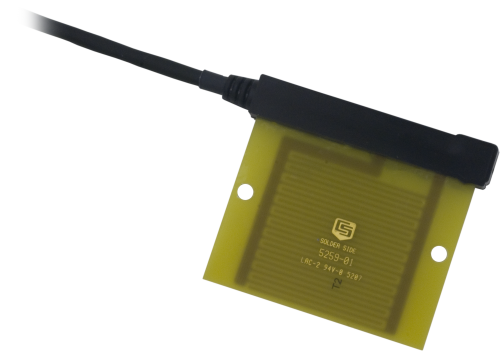
The 237 consists of a circuit board with interlacing gold-plated fingers. Condensation on the sensor lowers the resistance between the fingers, which is measured by the data logger.
Droplets must touch two fingers simultaneously to change the sensor resistance. For this reason, the 237 is typically coated with flat latex paint, which spreads water droplets.
The colour and type of paint affect sensor performance. Campbell Scientific supplies the sensor unpainted, allowing customers to determine the appropriate paint to apply to the sensor's surface. The appropriate pigmentation should closely emulate the properties of a typical leaf.
Benefits and Features
- The sensor is shipped unpainted so the customer can choose the appropriate surface finish that best fits the application
- Imitates characteristics of a leaf
The 237 measures leaf wetness by determining the electrical resistance on the surface of the sensor. (A wet surface is less resistant.) It is primarily used to determine the percentage of time that a leaf surface is wet, versus the time it is dry. Note: The 237 is designed for short duration ac excitation. The sensing grid may become damaged by dc excitation or continuous ac excitation.
- Following calibration by user, detects periods of leaf wetness caused by rainfall, dew, or spray
- CS 237-L Leaf Wetness Sensor measures electrical resistance between interlacing gold-plated fingers on circuit board
- Size and smoothness of sensor emulates surface area of leaf
| Resistance at Wet/Dry Transition |
|
| Operating Temperature Range | 0° to 100°C |
| Short-Term Survivability Temperature Range | -40° to +150°C Sensor may crack when temperature drops below -40°C. |
| Painting | Sensor is shipped unpainted so customer can choose appropriate surface finish to best match the application. |
| Hole Spacing | 6.73 cm (2.65 in.) |
| Hole Diameter | 0.54 cm (0.213 in.) |
| Dimensions | 7.6 x 7.1 x 0.64 cm (3.0 x 2.75 x 0.25 in.) |
| Weight | 91 g (3 oz) with 3.05 m (10 ft) cable |







